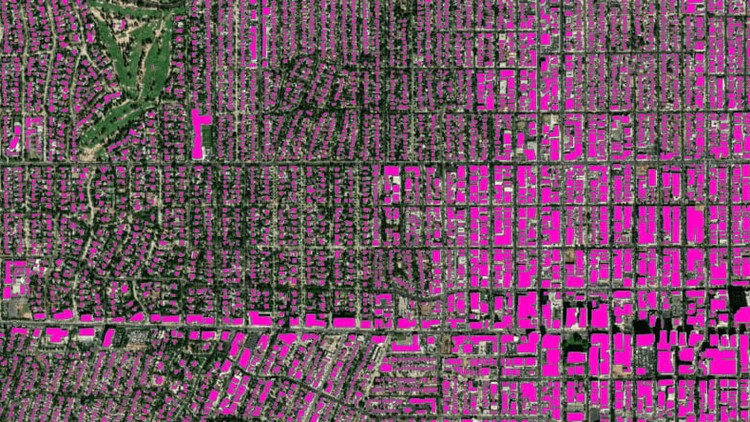
Become Expert in advanced Remote Sensing and GIS pixel- and object-based image analysis in Google Earth Engine & QGIS
What you will learn
☑ Fully understand advanced methods of Land use and Land Cover (LULC) Mapping in QGIS and Google Earth Engine
☑ Learn how to perform such advanced methods as object based image analysis (OBIA) and object-based classification using real-world data in QGIS
☑ Further advanced your skills in the most popular open-source GIS and Remote Sensing software tools (QGIS)
☑ Learn how to obtain satellite data, apply image pre-processing, create training and validation data for OBIA in QGIS and Google Earth Engine
☑ Apply advanced Machine Learning image classification algorithms
☑ Create and download LULC maps for your report
☑ Explore the power of Google Earth Engine for image analysis
☑ You’ll also have plenty of handy hints and tips will be provided alongside the code to prevent glitches
☑ You’ll have a copy of the labs’ step-by-step manuals used in the course for your reference to use in your analysis.
Description
[Advanced] Land Use/Land Cover mapping with Machine Learning
This course is designed to take users who use QGIS for basic geospatial data/GIS/Remote Sensing analysis to perform more advanced geospatial analysis tasks including object-based image analysis using a variety of different data and applying Machine Learning state of the art algorithms. In addition to making you proficient in QGIS for spatial data analysis, you will be introduced to another powerful processing toolbox – Orfeo Toolbox and to the exciting capabilities of Google Earth Engine!
I’m very excited that you found my LULC Advanced course. This course is designed to equip you with the practical knowledge of advanced Land Use and Land Cover (LULC) mapping, which is one of the core skills for any Geographic Information Systems (GIS) and Remote Sensing analyst. By the end of the course, you will feel confident and completely understand and apply advanced Geospatial analysis including performing Machine Learning algorithms for land use and land cover mapping and learning object-based image analysis and basics of segmentation. All this you will be able to carry out on the real data in one of the most popular GIS software which is QGIS and Google Earth Engine.
This course is different from other training resources. Each lecture seeks to enhance your GIS and Remote Sensing skills in a demonstrable and easy-to-follow manner and provide you with practically implementable solutions. You’ll be able to start analyzing spatial data for your own projects, and gain appreciation from your future employers with your advances GIS skills and knowledge of the cutting edge LULC techniques.
In the course, you will be able to learn how to carry out all stages of LULC mapping from acquiring satellite data to assessing the accuracy of your map and design a beautiful change map readily available to be inserted in your document or report.
The course is ideal for professionals such as geographers, programmers, social scientists, geologists, and all other experts who need to use LULC maps in their field and would like to learn fundamentals of LULC and change detection in GIS. If you’re planning to undertake a task that requires to use a state of the art classification algorithms for creating, for instance, land cover and land use maps, this course will give you the confidence you need to understand and solve such geospatial problem.
One important part of the course is the practical exercises. You will be given some precise instructions, codes, and datasets to create LULC maps and change maps using the QGIS software and Google Earth Engine.
In this course, I include downloadable practical materials that will teach you:
– How to install open source GIS software (QGIS and Orfeo toolbox) on your computer and correctly configure it
– QGIS software interface including its main components and plug-ins
– Learn how to classify satellite images with different machine learning algorithms in QGIS
– Learn how to perform training, validation data collection and accuracy assessment
– Learn how to perform object-based image analysis
– Learn how to perform object-based crop type mapping in QGIS
– Learn how to run supervised and unsupervised Machine Learning Algorithms in Google Earth Engine
INCLUDED IN THE COURSE: You will have access to all the data used in the course, along with the Java code files. You will also have access to future resources. Enroll in the course today & take advantage of these special materials!
English
Language
Content
Introduction
Introduction
Software used in this course
Overview: Software used in this course
Lab: Installing QGIS and install SCP
Lab: Sign In to Google Earth Engine
Orfeo Toolbox installation
Advanced LULC methods with open spurce software and tools
Section Overview
Introduction to Machine Learning
Basics of machine learning for classification analysis
Unsupervised (K-means) image analysis in QGIS
Common algorithms of image classification
Random Forest classification in OTB
SVM classification in OTB
DT classification in OTB
Accuracy Assessment
Image Classification in Google Earth Engine
Section Overview
Import images and their visualization in Google Earth Engine
Unsupervised (K-means) image analysis in Google Earth Engine
Random Forest Supervised CLassification in Earth Engine
Accuracy Assessment in Earth Engine
Object-based crop classification with Machine Learning algorithms in QGIS
Section Overview
Object-based image classification (OBIA) VS pixel-based image classification
Introduction to object-based image classification in QGIS
Feature Extraction for object-based crop classification
Training of Machine learning Classifiers for object-based crop classification
Object-based crop classification with Machine Learning algorithms in QGIS
Object-based image classification with training data creation
Section Overview
Segmentation of high-resolution satellite image
Creating training data from satellite image based on the segmented layer
Object-based image classification with the Machine Learning algorithm
Final Project
Final Project Description
BONUS